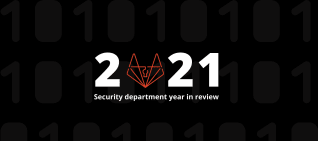Browse articles from Security
Recent posts

GitLab’s newest continuous compliance features bolster software supply chain security
Business leaders and DevOps teams can continuously mitigate the risk of cloud-native environments and use guard rails to automate software compliance.

Using the GitLab GraphQL API for vulnerability reporting
Follow along as we teach you how to use GitLab GraphQL API to manage vulnerabilities programatically.

Detecting and alerting on anomalies in your container host with GitLab + Falco
Learn how to install and use Falco to detect anomalies in your containers

How elite DevOps teams secure the software supply chain
The time is now to integrate security into your DevOps processes - your business will be better for it.

GitLab Security in 2021: protect, enhance, certify and strengthen
Join our Security team as we review how we worked to keep GitLab, and our community, secure this past year.

Updates and actions to address Log4j CVE 2021 44228 and CVE 2021 45046 in GitLab
Actions we’ve taken to investigate and mitigate the impact of Log4j, and actions our users can take.

How GitLab successfully expanded our SOC 2 Type II Trust Services Report Criteria
Here's how we expanded our SOC 2 Type 2 and SOC 3 reports.
Find out which plan works best for your team
Learn about pricingLearn about what GitLab can do for your team
Talk to an expert

